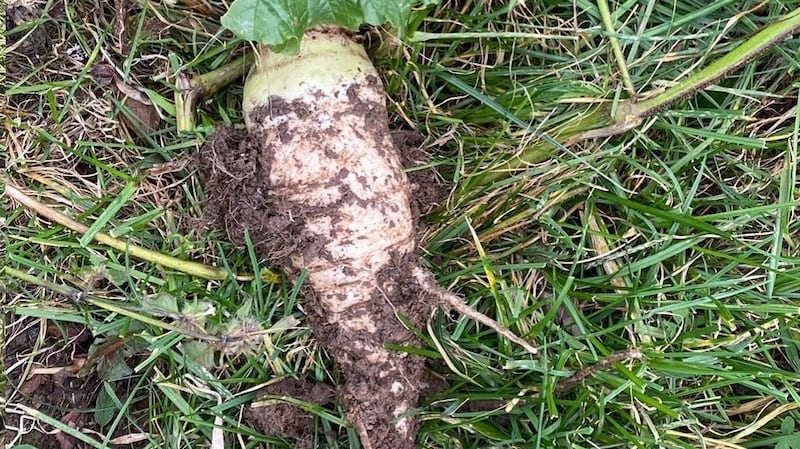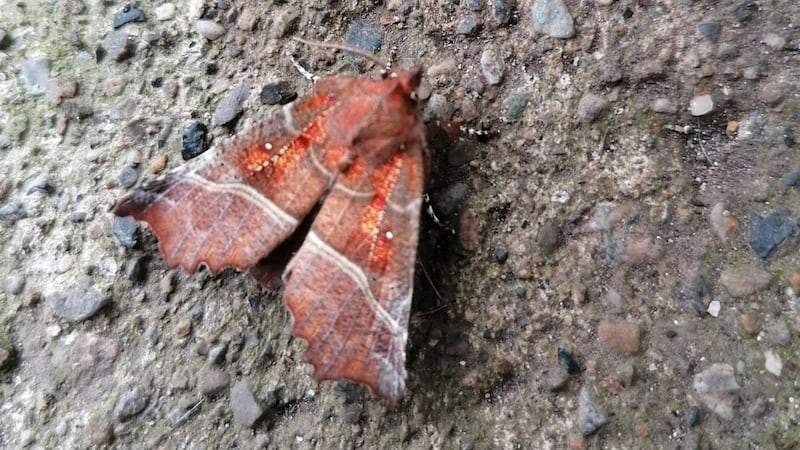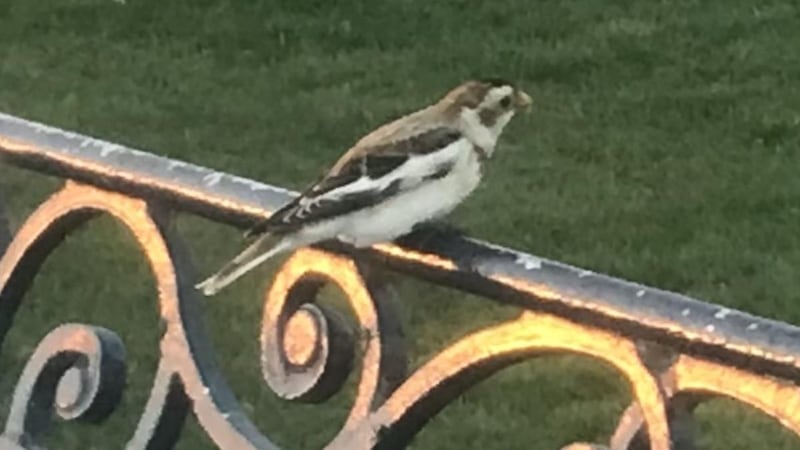I was reliably informed that these beautiful mushrooms in Belfast's Belvoir Forest are called Ruby elfcups! – Paul Aiken
Mycologist Hubert Fuller posits that they are Scarlet elfcups, Sarcoscypha austriaca. They usually grow on partially buried twigs of deciduous trees among mosses/leaf litter in moist soil. It has featured on one of our stamps in the Natural History issues. In truth, microscopic examination is needed to separate them definitely.
I found this spider when I was dismantling a trampoline in our garden and wondered if it was a false black widow? – Darragh O'Keeffe, Kildare

It certainly looks like it. The noble false widow has a cream crescent-shaped mark on the abdomen that runs back around both sides. The head is black. The other markings on the abdomen are variable and not always as definite as yours.

We moved into our new house in August 2021 and levelled a mountain of topsoil around the same time. Now we have this plant growing in clusters around the garden. What is it? – John Gaffney, Co Cavan
It is horseradish, which can spread from the tiniest piece of root. Become friendly with a restaurant that serves roast beef and steaks.

This herald moth partially woke up in my shed, attached itself to my glove and then woke up fully and flew away. – Paul Dunne, Galway
The green caterpillars of the herald moth feed on poplar, willow and rowan. It overwinters as an adult and flies again from March. This one was awake early.

Niall Doyle spotted this snow bunting on Bray promenade at the end of January. It has been hanging around there for several months now. The bird is an autumn passage migrant and a winter visitor. It remains near the shore to feed on seeds of grasses and plants of rough open ground. Ours mostly come from Iceland and Greenland rather than Scandinavia.
Have you a nature query, observation or photo you would like to share with The Irish Times? Submit it, with location of the image, via our website irishtimes.com/eyeonnature









